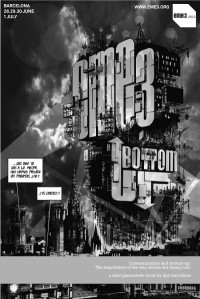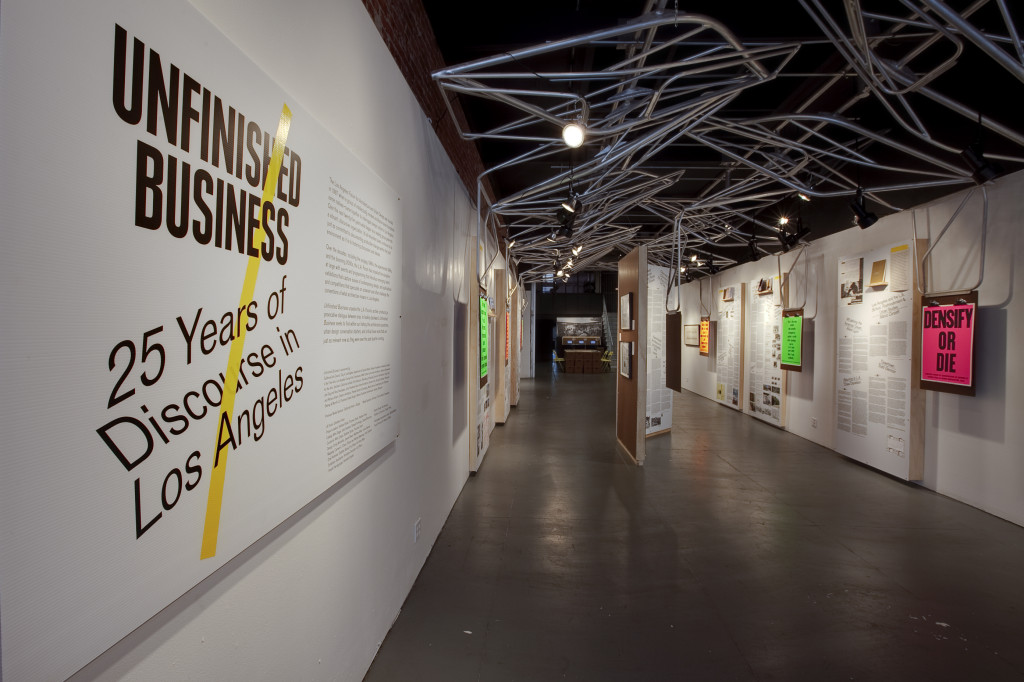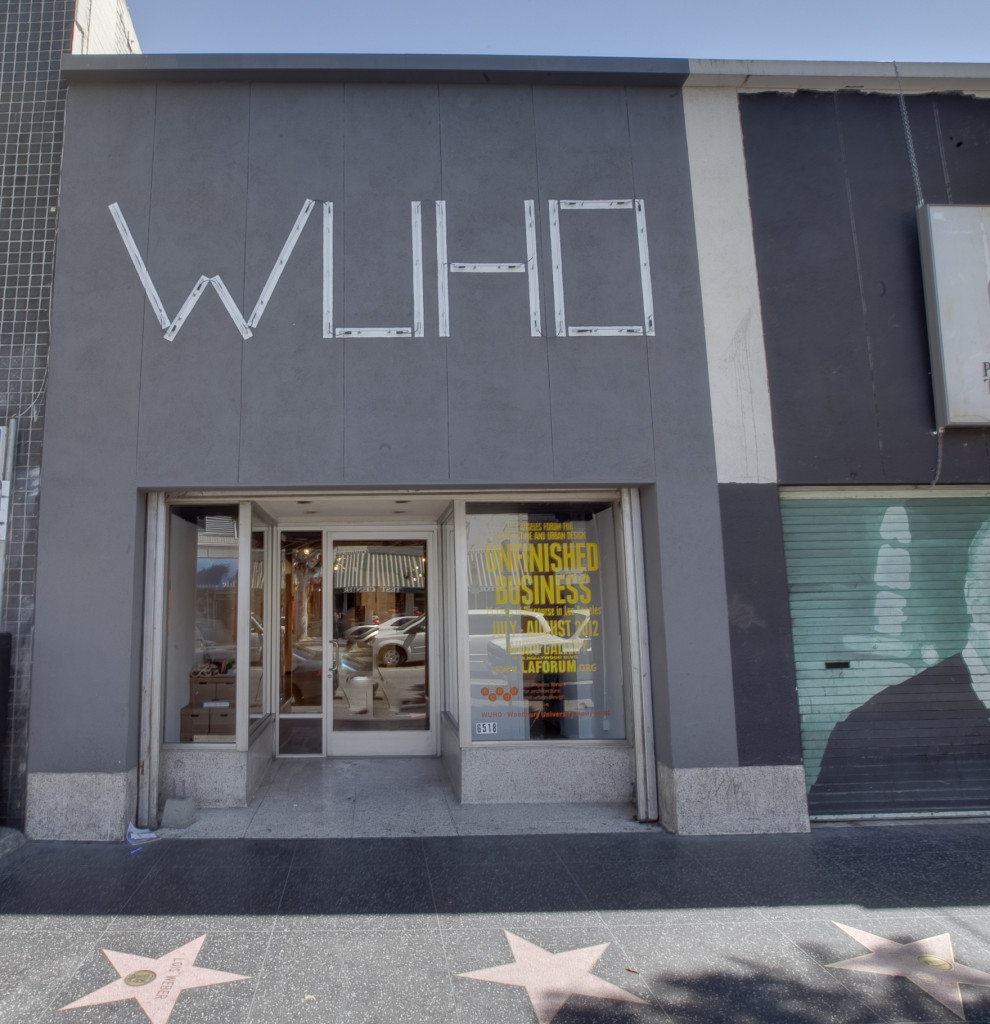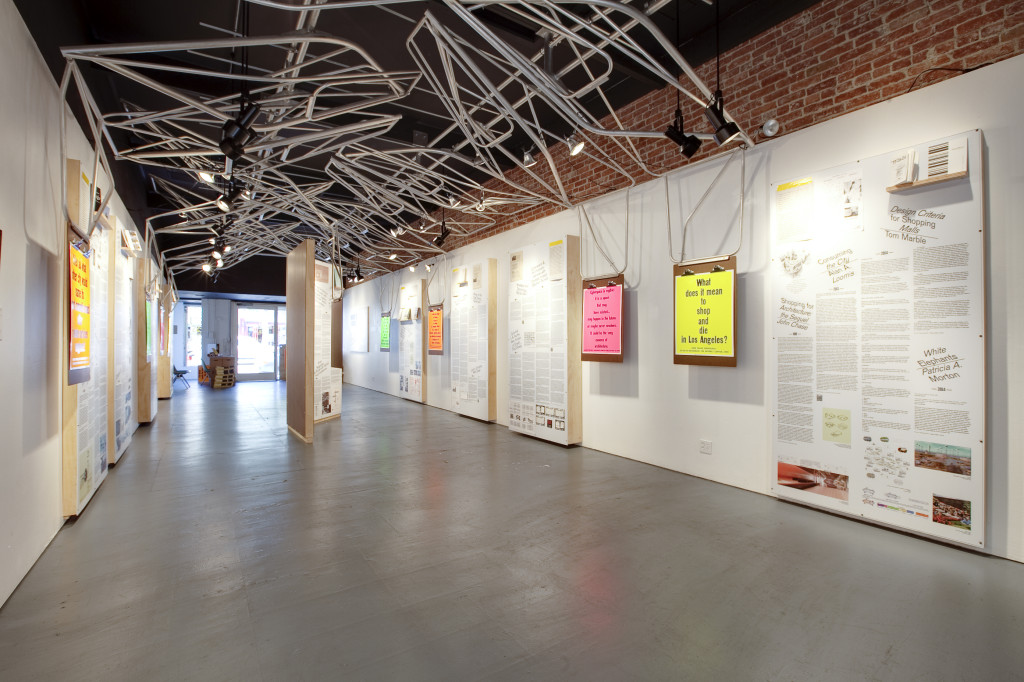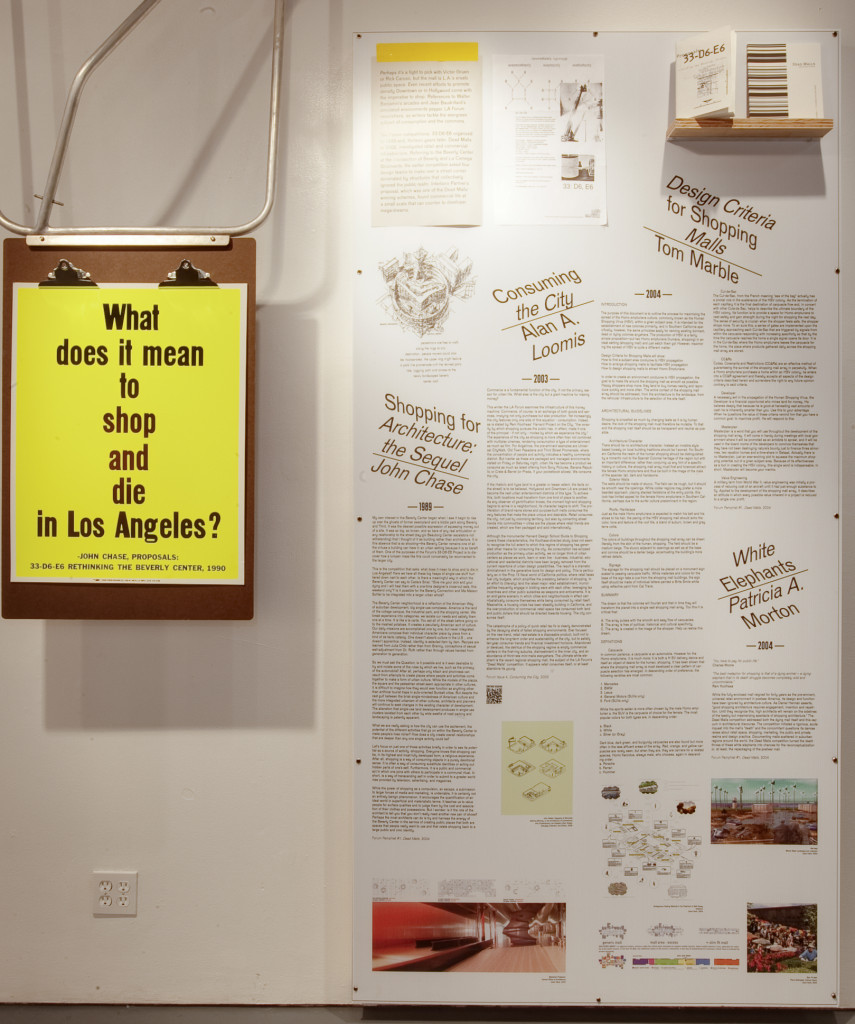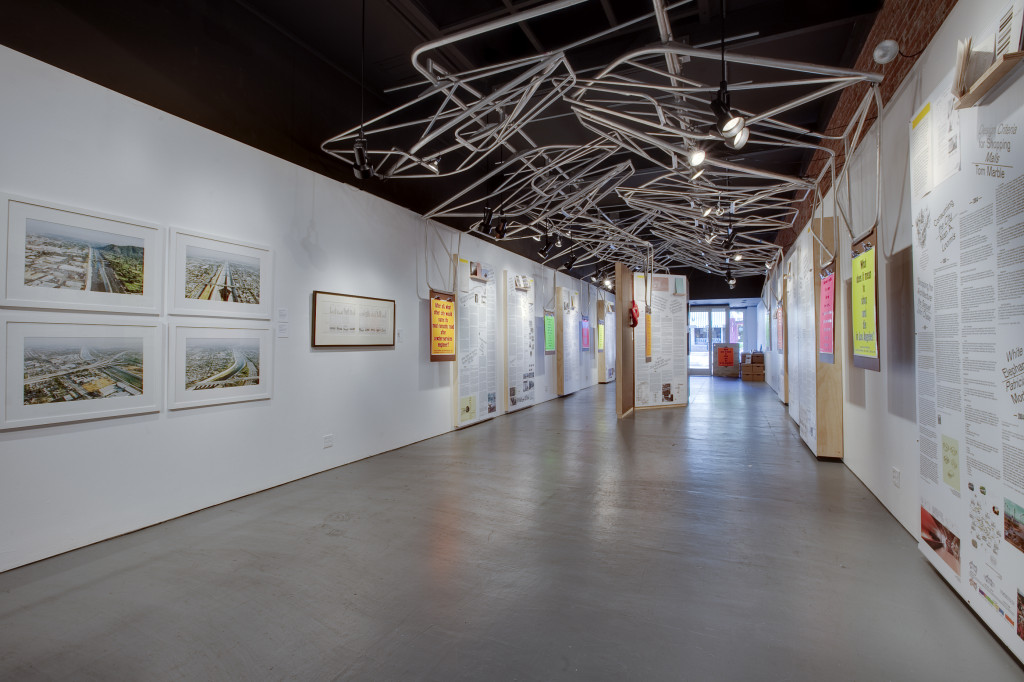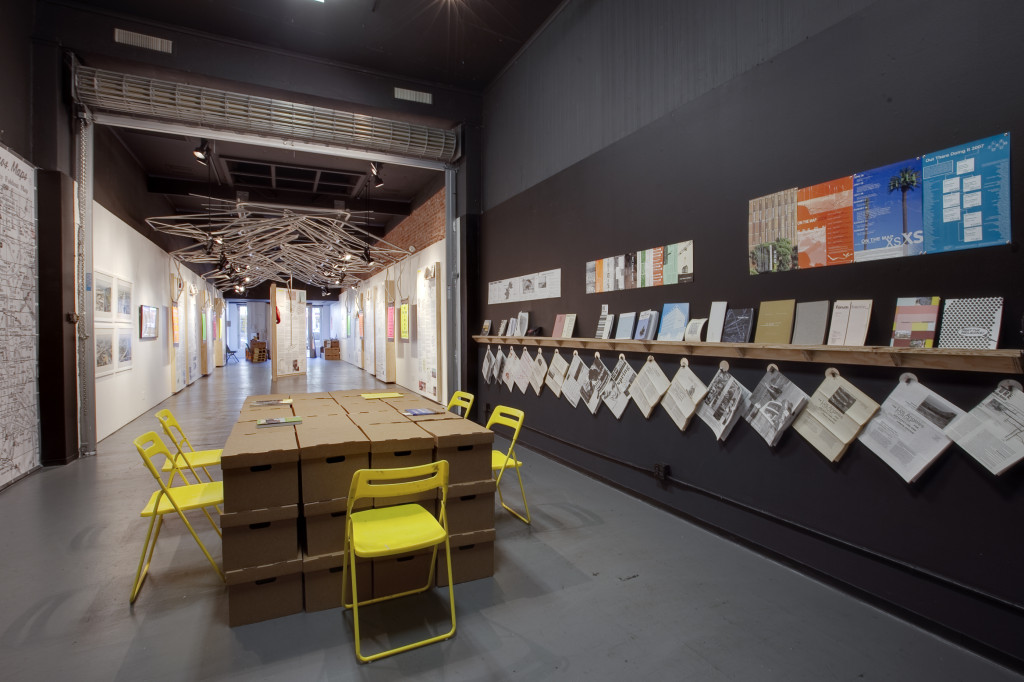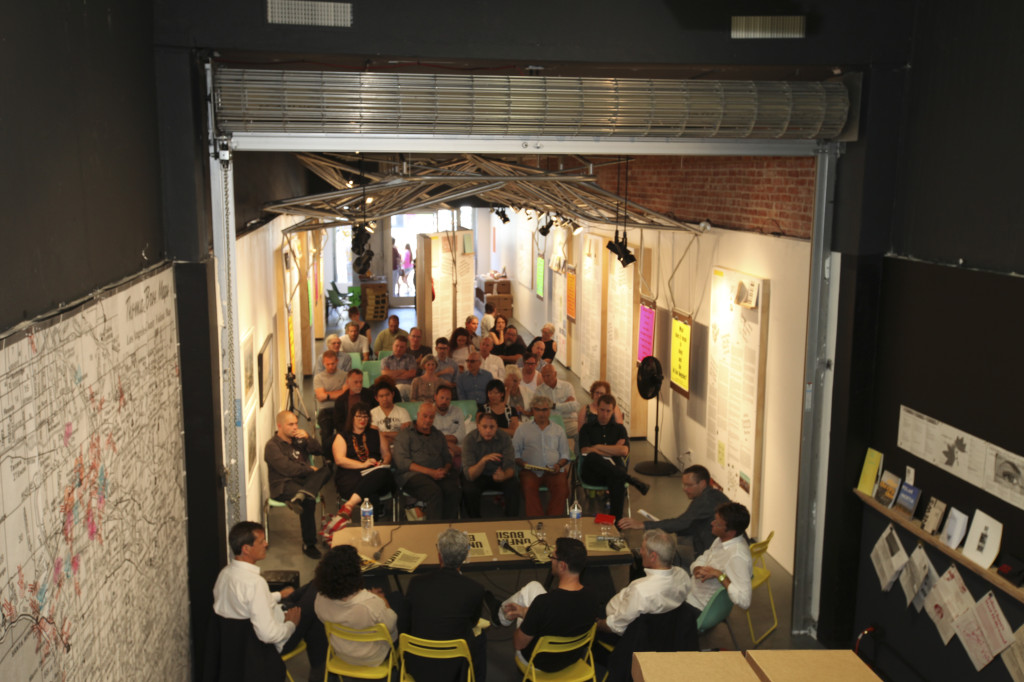Following the debate “Communication and Bottom-UP. The importance of the way stories are being told.” we [at dpr-barcelona] are committed to expand the debates and conversations avoiding them to get lost after a few days of the event. That’s why we’re publishing this digital-pamphlet [kindle + ePub] exploring the thought and ideas of thinkers and doers; articulated by simple detonating questions posed through emails, tweets and conversations intending to communicate effectively the very essence of the debate: “the importance of telling stories.” Read More …
Unfinished Business: 25 Years of Discourse in Los Angeles is a major retrospective of the Los Angeles Forum for Architecture and Urban Design.
The Los Angeles Forum for Architecture and Urban Design has been at the center of the city’s architectural discourse since 1987. Through each decade – the scrappy 1980s, the experimental 1990s, and the booming 2000s – the Forum has vigorously interrogated the culture of architecture and urban design in Los Angeles. Although geographically positioned on the far edge of the continent, the organization nonetheless impacts the discipline at large: Forum events and programming routinely introduce emerging talent; issues of contemporary design are captured in its exhibitions; and its publications and competitions speculate on urbanism and often challenge the conventions of what architecture means in L.A. The retrospective Unfinished Business unpacks the organization’s archive, revisiting a history of commentary and debate. In looking backward, the exhibition finds within the Forum’s history the architectural questions, urban design conversation starters, and critical loose ends that are just as relevant now as they were over the past quarter century. Unfinished Business doesn’t come to any fixed conclusion, but opens up a rich and potentially provocative dialogue.
Curators: Siobahn Burke, Thurman Grant, and Mimi Zeiger
press
“Now L.A. is still the place that Craig Hodgetts described in one of the original publications, reprinted in the current pamphlet: “The grids open vistas, frame trivialities and frame inconsistencies–of thoughtless breadth and pragmatic anticipation which has bred, albeit carelessly, the culture of cruising, hatchbacks and convenience corners, which exemplify the present vision of the future city.”
It is true that hybrids have replaced hatchbacks, and that taco trucks, rather than malls, are the new emblems of melting pot. It is also true that L.A. is becoming a place with a mass transit system and even bike plans. But, as the area around the forum event showed, it is also a vital, sleazy, fun, and terrifying mess. There is indeed a great deal of unfinished business for the Forum, and I look forward to seeing what they accomplish in the next 25.”—Aaron Betsky, Architect
his past December, just as retailers were making their holiday markdowns and non-profits issuing their year-end appeals, the Storefront for Art and Architecture was opening its last exhibition of 2011. Spurred by Occupy Wall Street, Strategies for Public Occupation featured “projects and strategies that offer a new, creative and productive way of spatial occupation for public demonstrations and actions in cities throughout the world.” In parallel Storefront hosted a week of workshops, performances and lectures in which artists and architects presented their own interpretations of the Occupy movement. Strategies for Public Occupation was, in short, intended to be a summation of interventionist practices and a wide-ranging discussion about the relationships among citizens, cultural producers and public space.
Unfortunately, Storefront got the title wrong.
The city. The city is arguably the dominant subject of architectural discourse today. Its return came in topical waves over the last decade: landscape urbanism, infrastructural urbanism, networks, shrinking cities, and wholesale metropolises constructed in China and the Middle East. And the 2008 bust, with the almost overnight evaporation of building commissions, by default solidified the city as subject, as the singular project for investigation. New York City’s grid, Detroit’s ruin, and Los Angeles’ heterogeneous sprawl proved enticing topics of research and speculation. Read More …
It’s time to put a moratorium on urban agriculture. On guerrilla street furniture. On food trucks and on yarn bombing. As a DIY enthusiast and a known proponent of tactical urbanism, I say this with a heavy heart. Read More …
Early evening Mid-city.
I’m driving westward down 3rd. Street. Not avenue. An ambitious, if under represented, Los Angeles artery. Beginning a few blocks away from Occupy LA, 3rd Street runs boldly for several miles from Downtown to Beverly Hills, an offshoot of the tight grid established in the late 1800s. Then it stops short. Dying out with a whimper at Alpine Drive. Representing the industrialist pragmatism of 19th century urban planning, the route never makes it past the historically green lawns of the Los Angeles Country Club—the club, in its 1911 location, is a pastoral parable in aspirational living. Ronald Regan was a member. Read More …
The living city. It’s a phrase or a variation on a phrase you’ve probably heard dozens of times to describe the urban realm. Perhaps we use the living descriptor because we like to anthropomorphize evolutionary processes; take Jane Jacobs’s iconic title The Death and Life of Great American Cities as an example. Or maybe it’s because cities are seething with people—the churn of humanity on the streets. Here, we can look to The Social Life of Small Urban Spaces, William H. Whyte’s seminal sociological study of public space for a titular equivalent. For sure, the life metaphor has sparked imaginative discourse: cities walk (Archigram) and go a bit mad (Koolhaas), but as digital devices and technological infrastructures increasingly mediate the way we live in cities, the language by which we describe urbanism shifts accordingly. The city is less akin to organisms and more to software, thus subject to coding, versioning, and hacking, like any computer program. Read More …
This spring I presented The Interventionist’s Toolkit at a symposium hosted by the University of Sydney’s Faculty of Architecture, Design and Planning. The Right to the City, which featured an exhibition along with the symposium, brought together architects, artists, historians, theorists and journalists; organized by architect Lee Stickells and artist Zanny Begg, the program took geographer David Harvey’s 2008 essay “The Right to the City” — with its evocation of Henri Lefebvre’s influential 1968 book — as its critical springboard. As Harvey wrote: “The freedom to make and remake our cities and ourselves is, I want to argue, one of the most precious yet most neglected of our human rights.” [1]
In recent years this argument has become a rallying cry for activists who oppose the neoliberal politics and policies of the contemporary city. There’s a romantic appeal, maybe even a sense of imminent empowerment, in the prospect of remaking our cities and thus ourselves — a notion that if we change our environments we will change our lives, or vice versa. But ever since the symposium, I’ve been wondering about how we might evaluate the results of those freedoms. How to rate the diverse architectural actions and urban interventions that seek to remake the city? Do knitted cozies for stop signs or street furniture made from discarded pallets rank higher or lower than municipal cultural events? How do we measure the impacts of ambiguously defined and informal activities that are not only creative and civic but also — lest we forget Harvey’s ourselves — emotionally charged?
There’s nothing that so thoroughly represents the sweet spot between culture and consumption in our current zeitgeist than the pop-up. Cheap, flexible, and low-risk, it’s the go-to model for galleries, shops (both entrepreneurial DIY and haute retail brands), and restaurants. Pop-ups mushroom in New York, London, and Berlin, even as economic bubbles burst. When retail vacancy rates hit soaring heights in 2009, the pop-up went from being a strategic action practiced by arts groups to a global phenomenon embraced by entrepreneurial types and corporate brands alike. Arts organization No Longer Empty may install contemporary art exhibitions in vacated storefronts, but their pop-up mission was dwarfed in scale last holiday season when Toys R Us opened 600 temporary 2,500 square foot stores across the country—a total of 1.5 million square feet of provisional real estate. Read More …
Sanatorium, the inaugural exhibition in the Guggenheim museum’s Stillspotting NYC series of off-site programs, opened in downtown Brooklyn just steps from the intense bustle and hawking of street vendors and discount retailers on Fulton Street Mall and a few blocks from the Brooklyn House of Detention. Created by Pedro Reyes and housed in an unrented space in the Metrotech Center provided by Forest City Ratner, Sanatorium is a “temporary clinic” designed to treat urban ills. It offers a number of therapeutic balms for the anxiety and depression caused city living. Read More …
